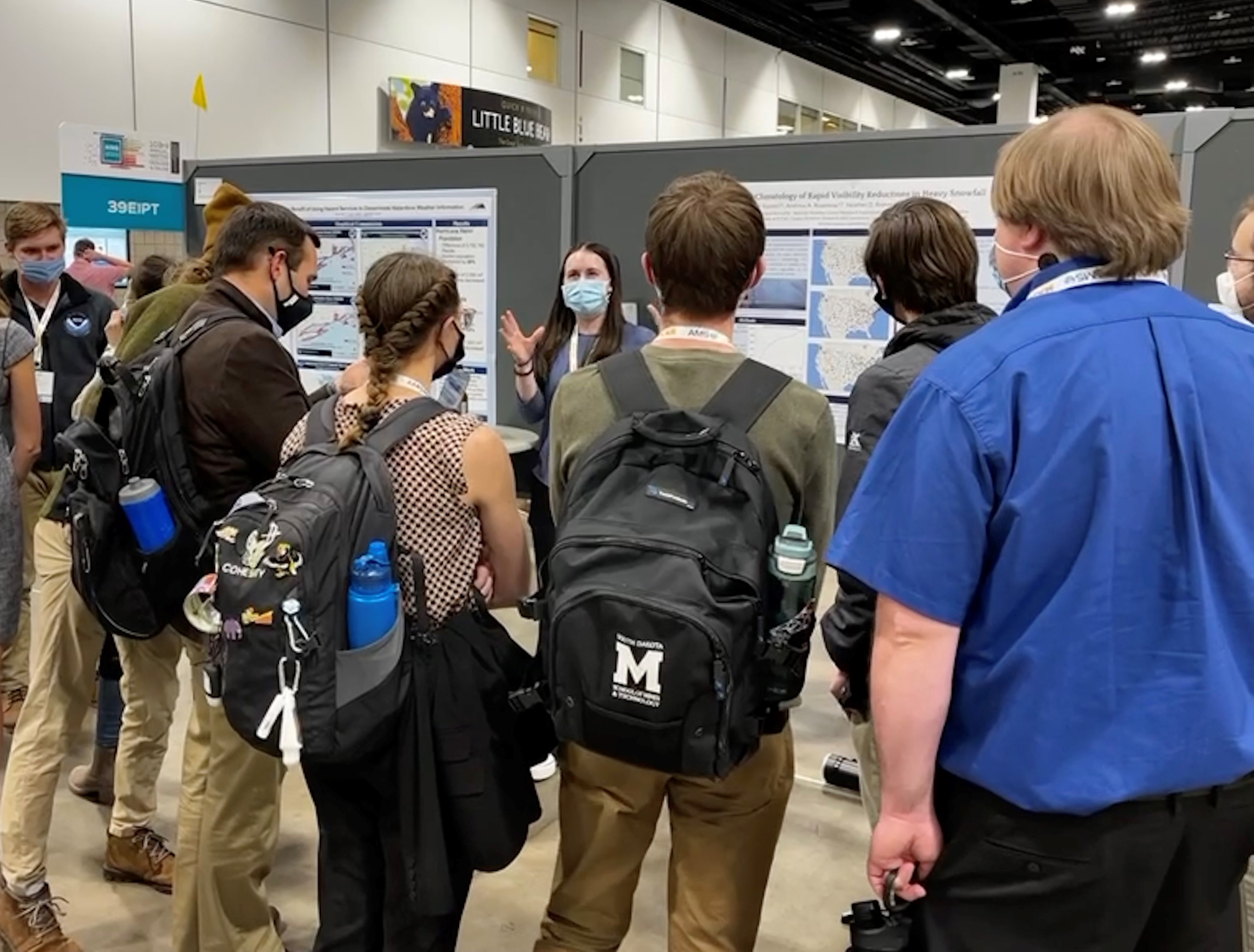ARL Weekly News – January 20, 2023
| Announcements |
2022 Silver Medal Award awarded to Rick Saylor for Air Quality Model.
On January 24, the Department of Commerce awarded the Silver Medal to two OAR team members who participated as part of a National Weather Service team that provided critical contributions to the NAQFC.
Rick Saylor of ARL and James Wilczak of PSL were cited for developing and implementing the Air Quality Model v6, which significantly advances air quality predictions from 48 to 72 hours into the future, that state and local air quality forecasters use to warn the public of harmful air pollution exposure, particularly in those areas that are impacted by wildfires and smoke for the Nation.
| Upcoming Conferences and Events |
Volcanic Ash Forecasting Presentations
Alice Crawford will be attending several workshops and meetings related to volcanic ash forecasting from January 30th to February 9th.
On Thursday 2 February, she will present “Probabilistic Volcanic Ash Forecasting for Aviation” in the “Tephra Impacts: numerical modeling, field measurements and observations, hazard assessment and forecasting challenges” section of the International Association of Volcanology and Chemistry of the Earth’s Interior (IAVCEI) scientific assembly.
On Sunday 5 February she will present “Evaluating probabilistic forecasts of volcanic ash” and serve on the panel discussion at the 8th World Meteorological Organization (WMO) International workshop on volcanic ash (IWVA-8). Coauthors for the presentations are Tianfeng Chai, Hyun Cheol Kim, Sonny Zinn and Mark Cohen from ARL. Allison Ring at University of Maryland AOSC department, Binyu Wang and Jeff McQueen from EMC, Jamie Kibler, Washington VAAC manager, Justin Sieglaff, CIMSS at University of Wisconsin, and Michael Pavalonis, NESDIS.
From 7-9 February she will attend the 20th meeting of WG-MOG-IAVW (Working Group on Meteorological Operations Group – International Airways Volcano Watch) as an advisor to the US MET panel member. Rebecca Cotton (FAA). Study notes from several working groups Alice was part of will be presented and discussed.
- Action 16/03: Key Performance Indicator Development and Guidance
- Action 16/11: SO2 forecasts based on multi-threshold approach, and the need for health experts
- Action 16/13: VAAC best practices and user educational material for QVA information for IOC
- Action 16/14: Significant Volcanic Ash Clouds.
- Action 16/17: QVA Technical Considerations
| Recent Conferences |
Denver AMS
Ella Hunter presented a poster titled “Towards a Climatology of Rapid Visibility in Heavy Snowfall” at AMS in Denver. This work was done through the National Weather Center REU this past summer, and she is now a Pathways Intern at ATDD.

Ella presents her poster at AMS in Denver.
| Publications |
Published: An evaluation of meteorological data prediction over Washington, D.C.: Comparison of DCNet observations and NAM model outputs
Lichiheb, N., Hicks, B.B., Myles, L., (2023). “An evaluation of meteorological data prediction over Washington, D.C.: Comparison of DCNet observations and NAM model outputs.” Urban Climate 48: 101410. http://doi.org/10.1016/j.uclim.2023.101410
Abstract: This study presents an example of how outputs of operational and readily-available mesoscale numerical models can be adapted to initialize dispersion calculations within the urban surface roughness layer. Three years of urban meteorological observations from central Washington, DC, are compared against forecast outputs of the North American Mesoscale (NAM) model. NAM wind speed predictions underestimate the observations in light winds and overestimate the measurements in high winds. Average wind directions are consistent. However, an adjustment of the predicted direction of the plume by −20° is needed. The uncertainty associated with this adjustment is large in light NAM wind speed with no evident variation by season. The values of the standard deviation of the wind direction, σθ derived from NAM model outputs underestimate the observations by a small amount (about −1.5 to −2.5°). The results presented here indicate that mesoscale numerical model outputs can provide information adequate for dispersion calculations. However, levels of uncertainty associated with implementation of the suggested procedures increase with decreasing wind speed, causing considerable uncertainty in the implementation of adjustments as low wind speed conditions are approached. Results and recommendations reported here should not be extended to other numerical models or other cities without further testing.

